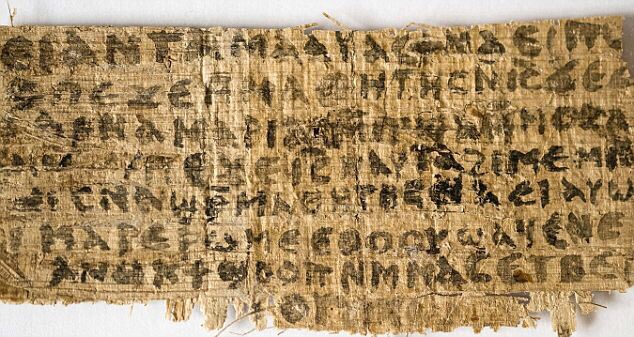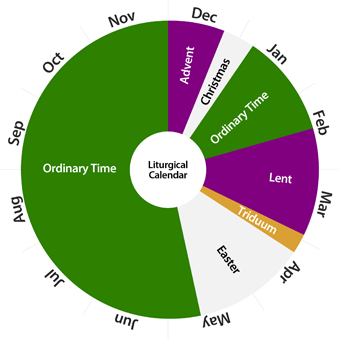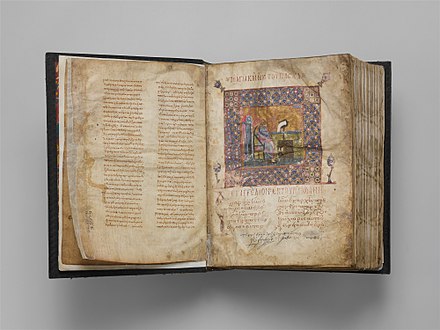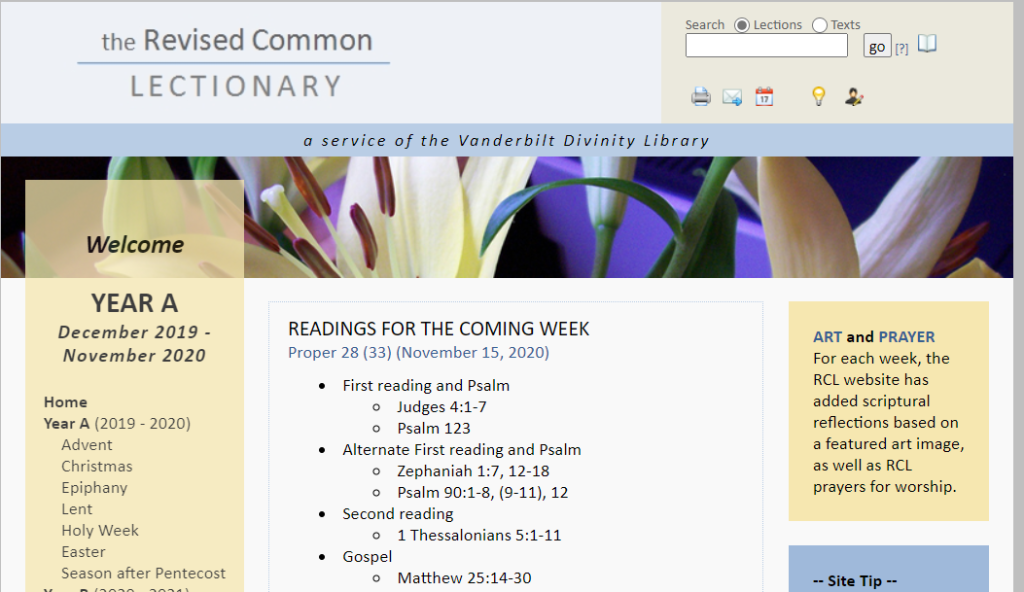Alongside the thirteen letters attributed to Paul, there are another eight documents which are included in the New Testament which are, by tradition, identified as letters. Seven of them are attributed to other apostles: three to John, two to Peter, and one each to James and Jude. One further document is anonymous, in that it is identified by its recipients (to the Hebrews) rather than its purported author.
These eight documents are of varying lengths, addressed to a range of people in a variety of locations. They contain injunctions, exhortations, and commands about how to live in accordance with the way of Jesus.
They reflect the varying realities of some small, growing communities of followers of Jesus in the eastern Mediterranean region. These communities developed within the fertile fields of Second Temple Judaism. Their members were seeking to live out their faith under the realities of the Roman imperial power. Ultimately each of them contributed to the formation of what came to be known as the Christian Church.
In each case, the book is presented as a letter—although the character of some of these books suggests that they may not originally have been written as a letter.
These books provide us with insights into the variety of ways that the early church presented the good news and gave instructions about following the way of Jesus. Each in their own way points to the continuing presence of Jewish believers beyond the initial years of the Jesus movement.
Letters in the Name of John
The author of 1 John is never named, but the opening verse makes the claim that the letter comes from one who has “heard…seen…looked at and touched” for himself, the very “word of life” (1:1). The inference is that the author has had personal contact with Jesus himself; in the third century, Irenaeus made the definitive claim that the letter was written by “John, the disciple of the Lord” (Against Heresies 3.16.5).
This claim goes beyond any direct assertion within the letter itself; although such a claim might be reinforced by the author’s reiteration of his privileged status as eyewitness (and earwitness): “we have seen it” (1:2), “what we have seen and heard” (1:3), “the message we have heard from him” (1:5), as well as a later reminder: “just as he has commanded us” (3:23).

Both 1 John and the Gospel of John state that they were “written … [concerning] “eternal life”, which was granted to people who “believe” in Jesus as “the Son of God”. The similarities suggest either common authorship, or an intentional allusion to the Gospel by the author of the letter. The differences in style and theology between the two works are subtle, but they do reinforce the latter option as preferable.
One clear difference to be noted is that, whilst the Gospel makes frequent references to Hebrew Scripture (both in quotations and by allusion), the letter betrays little awareness of these scriptures, other than what had already been mediated through the Gospel. The strong Jewish context of the Gospel is not evident in this letter.
The identity of the author of 2 John, and the recipients of this letter, has occasioned debate; in neither case is the letter unambiguous in what it says. The “elect lady and her children” (1) could be specific historical individuals, but are usually interpreted in a symbolic fashion, referring to a community of believers with their patroness. A later comment supports this interpretation, with a reference to “the house” (10) suggesting a community of believers meeting in a house. (Evidence for this practice is to be found in Acts and Paul’s letters.)
“The elder”, likewise, is anonymous; similarities in vocabulary and theology point to connections with the author of the first letter of John, and to the author of the Gospel (as noted below). A link with the apostle John depends on decisions made about the authorship of these documents.
A comment in the first church history, written in the early fourth century by Eusebius, provides a problem for this last claim. Eusebius refers to the second century leader, Papias, and notes that he apparently differentiates between John, one of “the disciples of the Lord”, and “the elder John” (Ecclesiastical History 3.39.3–4). Nothing in this letter itself supports a claim for apostolic authorship.
In 3 John, we might readily assume that “the elder” (1) is the same person as the author of 2 John; at a very basic level, there is strong similarity of terminology in phrases used, such as “whom I love in truth” (1), “I was overjoyed” (3), the reference to writing “with pen and ink” (13), and the final greeting (15a).
More significantly, key theological features of the Johannine Gospel and the other two letters of John are evident in this letter: a commitment to truth (1, 3, 4, 12) and a valuing of love (6). There is also a sense that the local community is part of a wider movement, in the exhortation to act “faithfully” towards fellow believers, even if they are not personally known by the recipients of this letter. (The Greek term of verse 5, adelphos, literally means “brother”; NRSV “friends” rightfully gives it an inclusive sense).
A Letter in the Name of James
The description of the author of this treatise is short and to the point: “James, a servant of God and of the Lord Jesus Christ”(1:1). James was a well-known figure; he is named amongst the brothers of Jesus (Mark 6:3; Matt 13:55; Gal 1:19) and seems to have been the leader of the church in Jerusalem (Acts 12:17; 15:20; 21:20).
Was the treatise written before James was put to death in 62CE? (Josephus reports his death in book 20 of his Jewish Antiquities—not to be confused with James, the son of Zebedee, whose death in the year 44CE is noted at Acts 12:2.) The knowledge of Jewish scripture and traditions shown in this work, as well as its extensive set of allusions to the teachings of Jesus, support the possibility that James himself wrote it—or, more likely, preached it, with someone else writing it down. There are many features to support the view that it originated within the early Palestinian (even Jerusalem) part of the Jesus movement.

The refined style and extensive Greek vocabulary employed throughout suggest it may have been written by one schooled in Greek rhetoric and literature—and thus, unlikely to have been a Jewish peasant. So, the book might have been written in the form we have it after the death of James, perhaps as statement of his authority and teaching within the Jerusalem church, in order to encourage other congregations with Jewish members.
One verse describes these congregations as “your synagogues” (2:2). Some scholars have claimed that it must have been written much later, even in the second century, by a person writing in the name of James, as a way of claiming his authority for the teachings proposed in this letter. This view seems less persuasive these days.

Letters in the Name of Peter
The author of 1 Peter is announced simply as “Peter, an apostle of Jesus Christ” (1:1). This would suggest a letter from a writer with close personal links with Jesus. The substance of the letter sits uneasily with this claim. The letter’s refined style of language, and especially the use of a number of classical Greek words, is rather unexpected for a Galilean fisherman.
There are a number of references to the suffering of Jesus (1:11; 2:4, 21, 24; 3:18; 4:1, 13; 5:1), but no other indication that the author knew anything of the earthly ministry of Jesus. Instead, the letter reflects the Christology of the developing movement, interpreting the death of Jesus in sacrificial terms (1:18–19; 2:24; 3:18) and attesting to him as the one who is risen (1:3; 3:21), a mediator with God (2:5), to be acknowledged as Lord (3:15), now dwelling with God in glory (3:22; 5:10), whose future return is awaited (1:7–8, 13; 4:13; 5:4).

The author claims to have been “a witness of the sufferings of Christ” (5:1)—a curious claim to be made by Peter, if the accounts of his denial and desertion of Jesus, found in the canonical gospels, are to be believed! He also describes himself as an “elder” (5:1), which we would not expect to be a term to be adopted by Peter. The word indicates the author’s leadership role within the developing community of faith.
The identification of this community as being “in Babylon” (5:13) is frequently interpreted as being code for Rome, drawing on the same tradition found in Revelation 17:1–18:24. The link with Mark (5:13) has been taken as a further indication of Roman origins, as Mark was alleged to have been in Rome with Peter. However, these connections are faint, revealing nothing of substance about the nature or purpose of the letter.
The close of the letter indicates that it has been written “through Silvanus” (5:12), leading some interpreters to suggest that Silvanus, as secretary, placed a more educated and polished mark on the letter as he transcribed the author’s thoughts. But an alternative translation of this verse is possible, by which Silvanus is designated as the one who delivers the letter, rather than being involved in its writing.
Thus, this Silvanus may well be a different person from the Silvanus who is known as a fellow-worker with Paul (2 Cor 1:19; Acts 15:40) and is called the co-author, with Paul, of both letters to Thessalonica. As he was a member of the Pauline group, we would expect more Pauline influence to be evident in 1 Peter if he was involved in its creation.
In fact, the letter shows more similarity to the “pastoral” letters attributed to Paul. Like them, it is more feasible that this letter was written after the death of the apostle, in his name, in order to encourage and guide believers in what appears to have been a time of increased suffering. Jesus is invoked as the guide and example for believers in this situation.
The first verses of 2 Peter follow the pattern of the opening address of a letter: “Simeon Peter…to those who have received faith…grace and peace” (1:1–2). However, nothing else reflects standard letter practice. There are no closing greetings, simply a reference (unique amongst New Testament books) to Paul and “all his letters” and a warning not to be swayed by erroneous interpretations of them (3:15b–17). The work ends abruptly with a truncated benediction (3:18b).
The work presents as a letter, but its true purpose is signalled by a series of revealing phrases in an opening statement. With his death in view, the author asserts, “I intend to keep on reminding you …to refresh your memory…so that you may be able to recall these things” (1:12–15). Rather than a letter, the work is more accurately characterised as a farewell testament, delivered by a teacher to his disciples with his imminent death in view, to ensure that his teaching is remembered after his death.
Farewell testaments can be found in Jewish literature (Gen 47–49; 2 Sam 23; 2 Esdras 14; 2 Baruch 57–86; Testament of Moses; Testament of the Twelve Patriarchs) as well as in the New Testament (John 14–16; Acts 20:17–38; and w there are elements in 2 Timothy).
The content of the teaching preserved in 2 Peter, however, is distant both from the teachings of Jesus (which the historical Peter would have heard) and from the first letter attributed to Peter. Rather than a letter penned by the disciple Peter, this book is a later work, written in the name of Peter in order to gain authority, to encourage believers at the end of the first century to hold fast to their faith.
A Letter in the Name of Jude
The name of the author of Jude, in Greek, is Ioudas. This is the same name as given to the infamous Judas, son of Simon Iscariot, whose crucial key role in the story of Jesus is featured in all four Gospels. English translations usually render this as Jude—probably to differentiate him from Judas Iscariot.
Four other men by this name also appear in the New Testament: a Galilean rebel (Acts 5:37), a disciple of Jesus (Luke 6:16; Acts 1:13; John 14:22), a resident of Damascus (Acts 9:11) and a co-worker of Paul (Acts 15:22, 27, 32).
The opening of the letter emphasises the authority of the writer as one who was close to Jesus: “Jude, a servant of Jesus Christ and brother of James”; he is noted amongst the brothers of Jesus at Mark 6:3 and Matt 13:55.

Could such a person as the brother of James and Jesus have written this work? It has a high quality of Greek syntax and vocabulary, which throws doubt on the claim; and the generalised formulaic and stereotypical language used has led many scholars to date it later in the first century, or even into the second century, by a believer employing the name of Jude to lend authoritative weight to his writing.
A reference to “the words which were previously spoken by the apostles” (17) probably indicates that the apostles were recognised as a distinct group by the time the document was created—suggesting a later rather than earlier date.
A Letter to the Hebrews
The author of Hebrews is most certainly not Paul, as some ancient church writers maintained. Despite claims that the work was written by various individuals mentioned in other New Testament books (Apollos, Priscilla, Silvanus), it is not possible to be absolutely certain about the identity of the author.
The single reference to a known individual, Timothy, in the closing greetings (13:23), does not guarantee that the work came from Paul, an associate of Paul, or even a Pauline circle. The use of a refined Greek style, the intense engagement with Hebrew scripture, and the use of typological interpretation (8:1–7, 13; 10:1, 11–13) together suggest an educated Hellenistic Jew who had come to faith in Jesus as Messiah and was a powerful preacher of the Gospel.
This writer notes that the message of salvation was “declared at first through the Lord, [then] attested by those who heard him” (2:3), thus acknowledging a chain of tradition lying behind the work and indicating that it was probably written towards the end of the first century.

Likewise, the precise identity of the recipients of this letter cannot be known, although some things can be said about them in rather general terms. The reference to “city” (13:14) might suggest an urban context, whilst notes of the good works carried out by the recipients (10:34; 13:16) and a warning to avoid “the love of money” (13:5) might point to a group with a degree of wealth.
The author describes the recipients of this work as being “dull in understanding” (5:11) and needing someone to teach them (5:12). This is the task that is undertaken in this “word of exhortation” (13:22). The document which we label as a letter is more accurately understood as an extended sermon, offering a “word of exhortation”.

on the same page of Codex Alexandrinus (dated around 400–440 CE)
For previous posts on the authorship of books in the New Testament, see https://johntsquires.com/2020/10/15/what-do-we-know-about-who-wrote-the-new-testament-gospels-1/
https://johntsquires.com/2020/10/15/what-do-we-know-about-who-wrote-the-new-testament-gospels-2/






















































